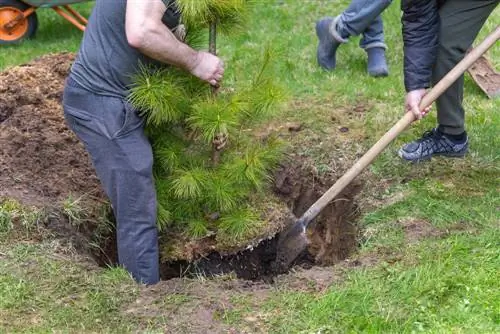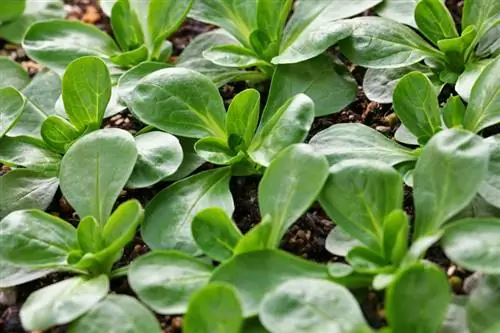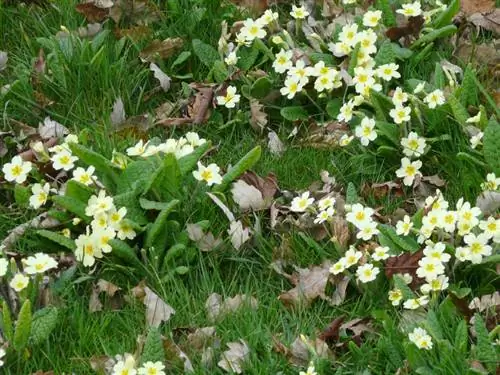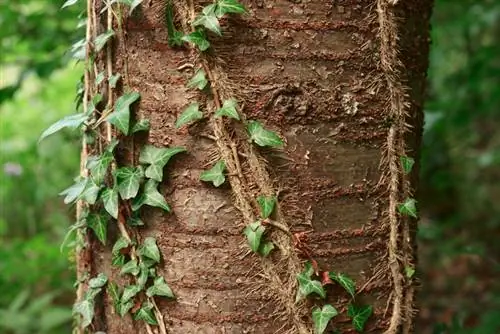- Author admin [email protected].
- Public 2023-12-16 16:46.
- Last modified 2025-01-23 11:22.
Cedars develop into stately trees and give the outdoor area a distinctive character. While the trees initially grow at a slow rate, over time they grow more and more quickly and reach considerable dimensions.
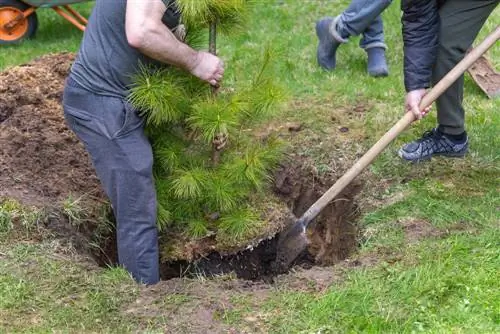
How do the roots of a cedar tree grow?
Cedar root growth consists of a mixture of deep and shallow spreading roots. Shallow roots can reach up to 30 centimeters deep in impermeable soils, whereas more deep roots are present in permeable soils.
Root growth
Cedars are heartroots, which manifest themselves as a mixture of deep and shallowly spreading roots. In cross section, the root ball is reminiscent of the shape of a heart with a main root that runs vertically into the depths and the richly branched side roots. The more impermeable the soil, the more shallow roots the cedar develops. These extend through a depth range of around 30 centimeters. Conversely, more deep roots are present in permeable substrates.
How to plant cedars
The ideal planting time is from September to October, although you should prefer mild autumn days. Dig a planting pit whose volume is twice as large as the root volume. Place the tree in the middle of the hole and fill it with the excavated material. A support post ensures that the shallow-rooted plants find more stability in the first few years. Tamp the soil well and water the cedar thoroughly and generously.
Notes on the place of growth:
- Plant young cedars only in open spaces
- Avoid planting in the front garden and on property edges
- Keep a distance of at least four and preferably seven meters from buildings
- ideally the distance is half the expected growth width
Control root propagation
Over the decades, adult specimens develop stately dimensions and an impressive appearance. However, home and garden owners are noticing the damage the underground roots can cause. They lift pavement slabs, destroy pipes in the ground or cause cracks in building facades. Therefore, carry out annual pruning measures immediately after planting.
Potentials for containment
Ingrown and firmly rooted trees can be contained at any time in both the root and crown areas. You can see from the art of bonsai that such interventions do not harm the trees. All that is important is a good balance between the root ball and the crown so that there is no disturbed growth. It is not easy for the layperson to correctly assess this relationship.
Tip
The root system has similar dimensions to the tree crown so that the tree is firmly anchored. Therefore, estimate the severity of the pruning interventions on the crown branches that you are removing.
Problems with old trees
Even if you can delay the impending dangers by cutting measures for a few years, risks cannot be completely ruled out. Regular cutting of roots and branches results in unbalanced and one-sided growth, which reduces stability in storms. This effect occurs especially when the main root needs to be cut. In addition, the annual care procedures are costly because they have to be repeated every year.

